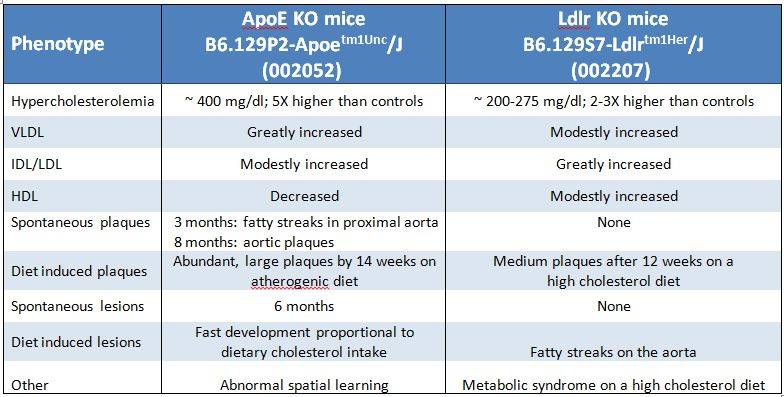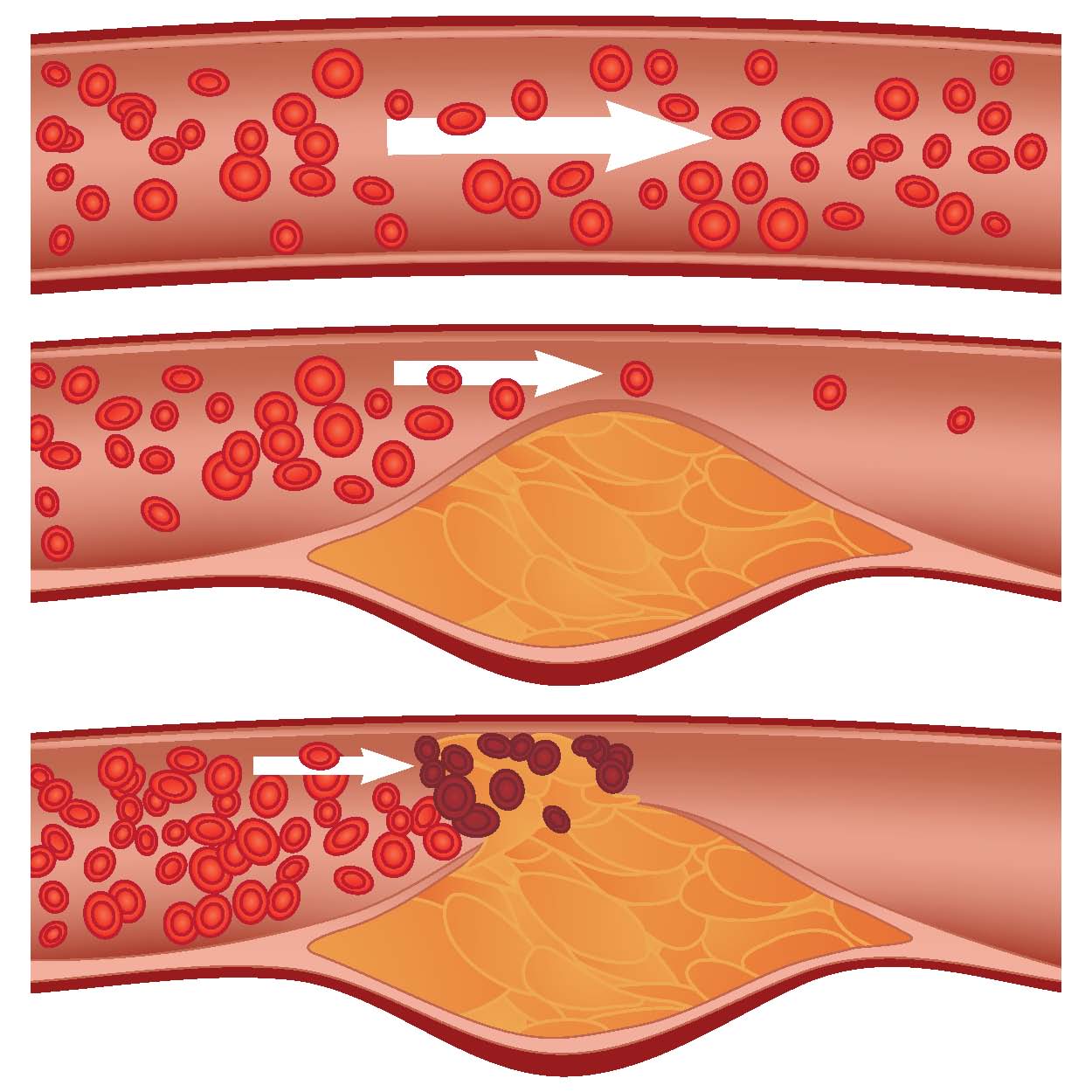Should I use Apoe- or Ldlr-deficient mice for atherosclerosis studies?
Mice deficient in either Apolipoprotein E (Apoe) or Low density lipoprotein (Ldl) receptor (Ldlr) almost certainly are the two most commonly used mouse models for hyperlipidemia and atherosclerosis research. Both APOE and LDLR are important for the clearance of cholesterol and triglyceride-rich lipoprotein particles from the blood. APOE is a plasma glycoprotein constituent on the surface of most lipoproteins including very low density lipoprotein (VLDL), intermediate-density lipoprotein (IDL) and chylomicron remnant lipoprotein particles.
 LDLR is one of the cell surface receptors in liver cells that binds to APOE to clear the lipoprotein particles from the blood. LDLR also binds to LDL particles via interactions with apolipoprotein B (APOB) to clear LDL from the circulation.
LDLR is one of the cell surface receptors in liver cells that binds to APOE to clear the lipoprotein particles from the blood. LDLR also binds to LDL particles via interactions with apolipoprotein B (APOB) to clear LDL from the circulation.
In humans, mutations in LDLR and APOE are associated several hereditary hyperlipidemic disorders, including familial hypercholesterolemia and type III hyperlipidemia, and patients with these conditions have increased susceptibility to atherosclerosis.
Both Apoe- and Ldlr-deficient mice show elevated plasma cholesterol levels, and develop atherosclerotic plaques to different extents under specific dietary conditions.
The phenotypes of the two most popular Apoe and Ldlr-deficient strains, both backcrossed to the atherosclerosis-susceptible C57BL/6J genetic background, are compared below.
 With respect to atherosclerotic plaque development, Apoe-deficient mice develop progressive lesions more characteristic of those observed in humans. The lipid profile of Ldlr-deficient mice – with a higher percentage of cholesterol carried in IDL/LDL particles– more closely resembles that in dyslipidemic humans, however. Further, in experiments involving bone marrow transplantation, Ldlr mice are the preferred model because bone marrow from Apoe-sufficient donors can reduce the atherosclerotic phenotype of Apoe-deficient hosts.
With respect to atherosclerotic plaque development, Apoe-deficient mice develop progressive lesions more characteristic of those observed in humans. The lipid profile of Ldlr-deficient mice – with a higher percentage of cholesterol carried in IDL/LDL particles– more closely resembles that in dyslipidemic humans, however. Further, in experiments involving bone marrow transplantation, Ldlr mice are the preferred model because bone marrow from Apoe-sufficient donors can reduce the atherosclerotic phenotype of Apoe-deficient hosts.
But wait! There’s more!
Mouse models that carry the Apoe- and Ldlr- single mutations in combination with mutations in other genes in the lipoprotein trafficking and catabolic pathways are available, too. Apoe- and Ldlr- double mutant mice (B6.129-Apoetm1Unc Ldlrtm1Her/J (002246), for example, have cholesterol and lipoprotein profiles similar to the Apoe-single mutant mice, and reportedly develop atherosclerotic plaques even more rapidly than Apoe-single knockout mice. Similarly, Ldlr-deficient mice that have been engineered to only express the Apob-100 isoform (B6;129S-Ldlrtm1Her Apobtm2Sgy/J
(003000) develop larger atherosclerotic plaques than aged matched Apoe-deficient mice, despite having similar total serum cholesterol levels.Overall, these mice are less popular than the Apoe- and Ldlr-single mutant strains, and are only available via cryorecovery.
Finally, C57BL/6J-LdlrHlb301/J (005061) is another Ldlr-deficent strain that was discovered in an ENU mutagenesis project here at JAX. Homozygotes for this mutation, nicknamed “wicked high cholesterol”, develop more severe atherosclerotic lesions more rapidly than the more venerable Ldlr-KO strain when fed an atherogenic diet.
Do you need Apoe- or Ldlr-deficient mice on Western or atherogenic diets?
Our JAX® Services team can place cohorts of either strain on either a Western or atherogenic diet, and send them to you at a predetermined age. All you have to do is choose a strain, tell us the specific diet you want us to use, and we’ll do the rest.
